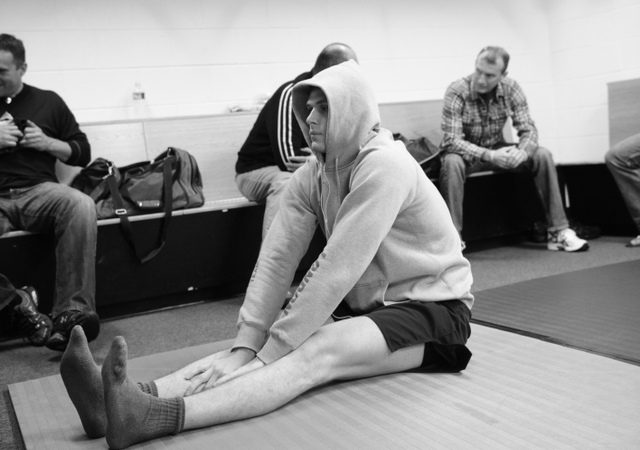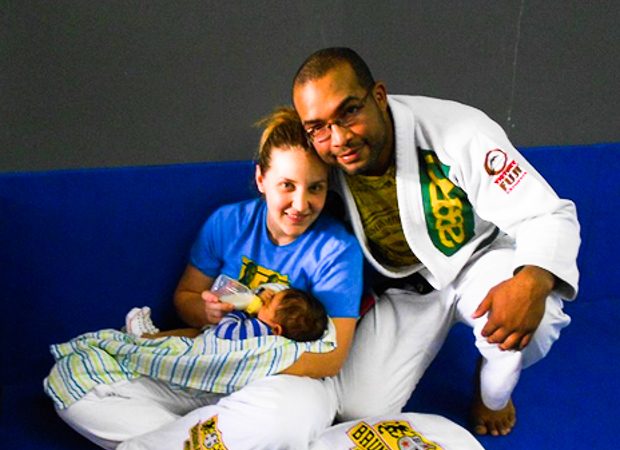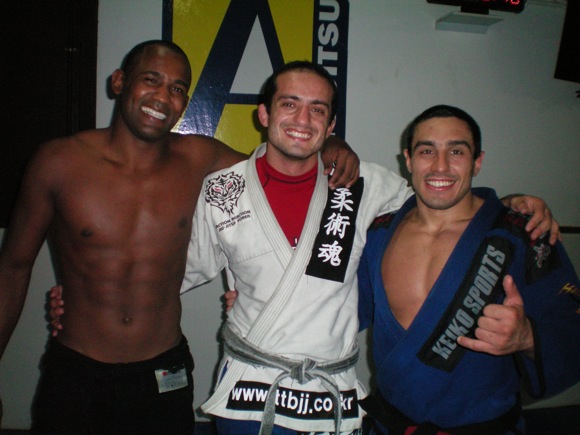
The ankle is not only one of the most mobile joints of the body, it is often commonly attacked in competition in hopes of seeking a submission. If you are a longtime reader of GRACIEMAG, I am sure you have seen many photos of top Jiu-Jitsu players engaged in a ankle submission battle for a victory. As Renzo told me many years ago, “the ankle, although we don’t always attack it, doesn’t mean that it isn’t always available.” Since this vulnerable joint is also not often trained for strength and performance, ankle injuries during Jiu-Jitsu are a common occurrence. If you have spent time on the mats, I am sure you have suffered some sort of ankle injury at some point. Unfortunately, taping up or hoping the injury will, “just go away with time” is not the best way to take care of this important area of the body. If your ankles lack strength, mobility, and proprioception (the ability to feel yourself in space and the ability to react) and you have strengthened the rest of your body so that the force that will be put into the ground through those ankles is increased, you’re asking for trouble. The goal of this article is to help you bulletproof the ankles from damage, and if injury does happen, give you the tools to get you back on the mats putting “your best foot forward.”
You may never have thought about it, but your feet are the only part of your anatomy that touches the ground to transmit all the force that you spend so much time developing in the gym from areas like your arms, legs, chest and back. Without healthy and strong ankles, however, you cannot properly run and jump, shoot for a takedown and go for a dynamic throw, play from spider guard or defend against an ankle submission. Even though this is easy to understand, most Jiu-Jitsu practitioners spend little to no time developing strength, mobility and proprioception in the ankles. (Or at least before an incapacitating injury takes place, that is!)
Not convinced you need to spend time on your aching ankles? A good test to check the reactivity of your ankles is a single leg proprioception test. Take your shoes off, balance on one foot and then close your eyes. If you all of a sudden feel like you can’t stay balanced, it may be time to work on your proprioception. Even worse, if there is pain or your balance on one side is much worse than another, you may need the following exercises.
Ankle Specific Workout
The following 4 exercises are easy to perform and can pay big dividends in your training. The only requirement is a piece of Theraband. This is simply a thin sheet of rubber that can purchased online or found at your local therapist. It is very affordable and transportable anywhere in your training bag or pocket. Depending on the strength of the band that you select, the following 4 exercises can be very demanding. For each of the exercises, repeat for 3-5 sets of 10 reps depending on your ability and potential soreness.
1.Plantarflexion
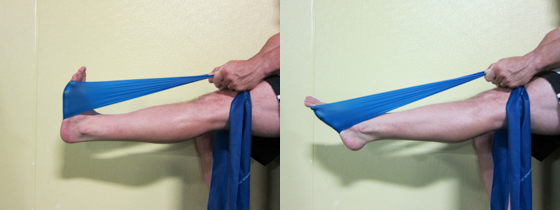
Begin by sitting with the band looped around the ball of one foot and the knee straight. Pull the band to create the desired resistance and push the toe downward as far as possible. Hold and slowly return to the original position.
2. Dorsiflexion
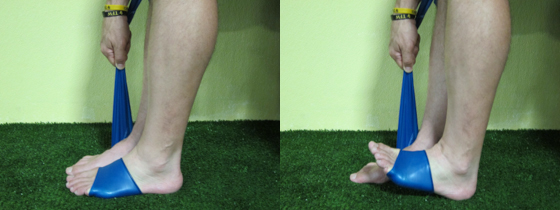
Begin with the feet flat on the floor and the band wrapped around the ball of one foot and held in place with the other foot. From flat on the floor, pull the toes up as high as possible and hold for 1-3 seconds. Lower under control.
3. Eversion
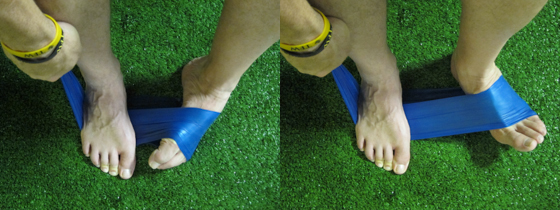
Begin with one foot wrapped in the band with the other foot standing on the band. While keeping the pressure on the band, point the toes up and out to the side as far as possible. Hold for 1-3 seconds, and return to the original position under control.
4. Inversion

Begin with one leg crossed over another and the top foot wrapped with the band while the other foot holds the band down. Pull the toes of the top foot toward the ceiling as high as possible. Lower under control and repeat.
Martin Rooney is the founder of the Training for Warriors system and has trained champion fighters for the UFC, Pride, ADCC and Olympics. His TFW fitness program is used in over 185 facilities in 25 countries around the world. Martin has been writing for GRACIEMAG for the past 15 years. Information about TFW certifications at trainingforwarriors.com.




